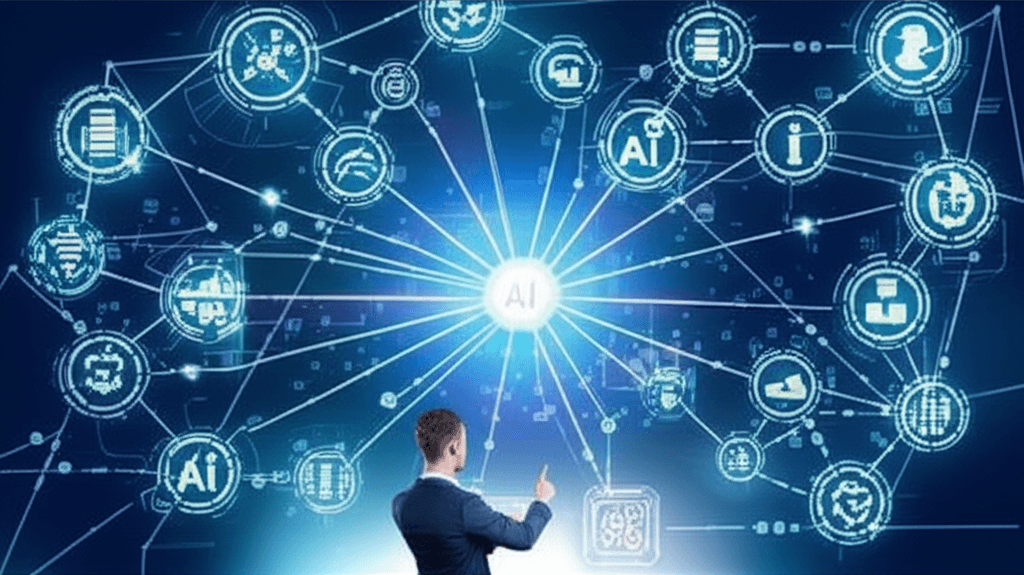IBM launches watsonx Orchestrate: Orchestrating autonomous AI for enterprise transformation.
IBM charts the future of business with agentic AI orchestration, moving beyond automation to intelligent, adaptive enterprise systems.
June 20, 2025

IBM is charting a course toward widespread business transformation through the strategic implementation of agentic AI, a vision that moves beyond task automation to the orchestration of intelligent, autonomous systems. This initiative, underscored by insights from IBM AI leader Hans Petter "HP" Dalen, centers on creating a collaborative ecosystem where AI agents work alongside humans to redefine operational efficiency and drive innovation. The core of this strategy lies not just in the development of individual AI agents but in their sophisticated coordination, a concept IBM refers to as orchestration. This approach aims to create a synergy between people and AI across virtually every business function, shifting the paradigm from simply automating tasks to orchestrating adaptive, intelligent processes.[1] The company posits that the era of AI experimentation is over, with the competitive advantage now belonging to those who can integrate purpose-built AI to achieve measurable business outcomes.[2]
At the heart of IBM's strategy is watsonx Orchestrate, a platform designed to build, deploy, and govern agentic workflows at scale.[3] This platform empowers businesses to create and manage a network of specialized AI agents that can collaborate seamlessly to execute complex, multi-step processes.[4][5] Unlike traditional automation that follows rigid, pre-defined rules, these AI agents are designed to be autonomous, proactive, and adaptable, learning from their experiences to improve performance over time.[6][1] A key differentiator of IBM's approach is the emphasis on integration. Watsonx Orchestrate is engineered to connect with a vast array of enterprise applications, with integrations for over 80 platforms including major players like Salesforce, SAP, Oracle, and Microsoft.[5][2] This interoperability is crucial for breaking down data silos and enabling agents to share context and coordinate actions across disparate systems, from customer relationship management (CRM) to enterprise resource planning (ERP).[5] The goal is to move from a human-in-the-loop model, where people constantly supervise AI, to a human-on-the-loop system, where humans manage and oversee the overarching strategy while autonomous agents handle the end-to-end execution of tasks.[3]
The practical implications of this vision span across numerous business departments. In human resources, for example, AI agents can automate and streamline the entire employee onboarding process or manage time-off requests.[7][8] For sales teams, agents can handle lead qualification, send follow-up communications, and trigger actions within a CRM system.[7] Finance departments can leverage agents to reconcile transactions, identify anomalies, and generate reports, potentially reducing month-end closing times significantly.[3] IBM's research indicates high expectations from business leaders, with 75% of executives anticipating that AI agents will autonomously execute transactional processes within the next two years.[1] A study by IBM's Institute for Business Value further highlights this optimism, showing that a significant majority of executives expect agentic AI to redefine how their teams work by 2027.[9] The aim is to empower business users, even those without technical expertise, to build custom workflows and solutions through low-code or no-code interfaces, democratizing the power of AI automation.[5][3]
Despite the transformative potential, IBM acknowledges the significant challenges that accompany the deployment of agentic AI. A primary concern is the risk of "agent sprawl," where a proliferation of disconnected agents could create more complexity than value.[5] To counter this, a unified orchestration platform is essential for ensuring coordinated execution, visibility, and governance.[5] Hans Petter "HP" Dalen emphasizes that governance is the fundamental enabler for scaling AI innovation, mitigating not only regulatory and reputational risks but also the operational risk of being unable to implement AI effectively.[10] Furthermore, the successful integration of agentic AI is not merely a technological challenge but a cultural one, requiring a shift in mindset across the organization.[5][11] Issues of data quality, security, and the integration with legacy IT systems also present substantial hurdles that businesses must overcome.[12][13] Addressing the "black box" nature of some AI decision-making processes is another critical aspect, demanding transparency and explainability to build trust and ensure accountability.[14]
In conclusion, IBM's vision for agentic AI orchestration represents a significant evolution in enterprise automation. By focusing on a centrally managed, highly integrated network of autonomous agents, the company aims to move businesses from isolated AI experiments to holistic, AI-driven operations. The watsonx Orchestrate platform serves as the technological centerpiece of this strategy, providing the tools for building, managing, and governing these complex AI ecosystems.[15] As articulated by leaders like HP Dalen, the journey requires a steadfast focus on governance, integration, and fostering an AI-first culture to navigate the inherent complexities.[11][10] While challenges related to security, data, and organizational change remain, the potential to unlock new levels of productivity and innovation positions agentic AI orchestration as a critical frontier in the ongoing digital transformation of industries.[16]
Sources
[1]
[4]
[5]
[6]
[10]
[11]
[12]
[13]
[14]
[15]
[16]